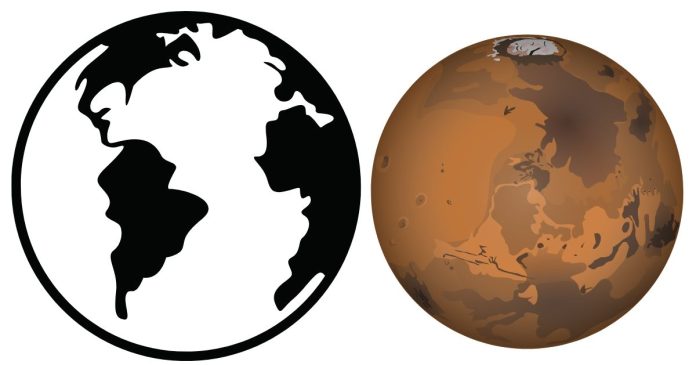Similarities Between Earth and Mars
Earth and Mars, while distinct in many ways, share several notable similarities that have intrigued scientists and fueled interest in Mars as a potential candidate for future human exploration. Below is a comprehensive list of the parallels between the two planets:
1. Similar Length of Day
- Earth: A day lasts 24 hours.
- Mars: A day (called a “sol”) lasts approximately 24 hours and 37 minutes.
The similarity in day length makes Mars potentially more compatible with human biological rhythms.
2. Axial Tilt
- Earth: Tilted at 23.5 degrees.
- Mars: Tilted at 25 degrees.
This similarity means that Mars experiences seasons similar to those on Earth, though they are longer due to Mars’ longer orbit around the Sun.
3. Surface Features
- Both planets have a diverse terrain that includes:
- Mountains: Mars has Olympus Mons, the largest volcano in the solar system.
- Canyons: Mars has Valles Marineris, a canyon system much larger than the Grand Canyon.
- Polar Ice Caps: Both planets have ice caps at their poles made primarily of water and carbon dioxide.
4. Presence of Water
- Earth: Water is abundant and covers about 71% of the surface.
- Mars: Although no large bodies of liquid water exist on its surface today, Mars has polar ice caps, subsurface ice, and evidence of ancient rivers, lakes, and possibly oceans.
5. Atmosphere
- Both planets have atmospheres, though they differ significantly in composition and density.
- Earth: Atmosphere is 78% nitrogen and 21% oxygen.
- Mars: Atmosphere is 95% carbon dioxide but is much thinner than Earth’s.
6. Evidence of Weather and Wind
- Both planets experience weather phenomena.
- Earth: Diverse weather patterns with rain, snow, and hurricanes.
- Mars: Wind storms, dust storms (some of which can encompass the entire planet), and occasional frost.
7. Potential for Life
- Both planets are within the habitable zone of the Sun (albeit Mars is at its outer edge).
- Mars has conditions that might have supported microbial life in the past, much like Earth’s early conditions.
8. Geological Processes
- Both planets have undergone processes like:
- Volcanism: Formation of volcanoes and lava plains.
- Tectonics: Evidence of shifting plates or similar surface activity (though Mars lacks current tectonic activity).
- Erosion: Wind and possibly water have shaped the surface features.
9. Gravitational Similarity
- While Mars has weaker gravity (38% of Earth’s gravity), it is still strong enough to potentially allow human mobility and retain an atmosphere.
10. Moons
- Both planets have moons:
- Earth: One large moon.
- Mars: Two small moons, Phobos and Deimos.
11. Exploration and Observation
- Both planets can be studied from the other via telescopes and robotic exploration missions. Earth has sent numerous rovers, orbiters, and landers to Mars to learn more about its environment.
12. Magnetic Field
- Both planets once had magnetic fields, though Mars’ is now largely inactive. Scientists study this to understand planetary evolution.


